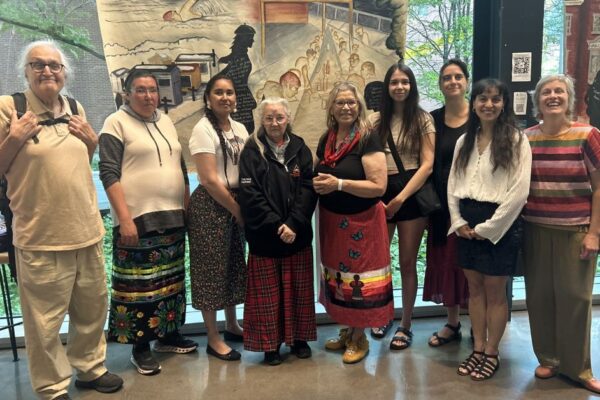- Research
Research report reveals groundbreaking data on the lives of youth in care in Quebec.

Every year in Quebec, more than 2,000 young people leave the care of the Director of Youth Protection (DYP) as they approach the age of majority. For youth under the care of the DYP, turning 18 means having to become independent quickly, with little or no support from loved ones. Their academic background also tends to be less robust than that of peers who have not had to face such a situation.
The figures are telling: only 37% of youth in care obtain their high school diploma by the age of 21, compared to 86% of the general population of the same age. That graduation rate is two and a half times lower.
Today, the Chaire-réseau de recherche sur la jeunesse du Québec (CRJ) is unveiling the results of a groundbreaking study conducted under the leadership of María Eugenia Longo, professor at the Institut national de la recherche scientifique (INRS); Martin Goyette, professor at the École nationale d’administration publique (ENAP); and Marie Dumollard, professor at the Université de Montréal. The study also benefited from the invaluable collaboration of Mélissa Ziani (INRS) and Josiane Picard (ENAP). The report is titled Portrait des jeunes ayant été placés sous les services de la protection de la jeunesse et leurs défis en emploi (“A portrait of youth who have been placed under youth protection services and their employment challenges”).
The report presented by the team reveals a more arduous and precarious path to autonomy for this category of Quebec youth. In addition to quantitative data collected from 1,136 young people who have had a placement overseen by youth protection services, the study also draws on original data gathered through interviews with 30 young people.
The work was commissioned and funded by the Ministère de l’Emploi et de la Solidarité sociale du Québec. It combines quantitative data from the Étude longitudinale sur le devenir des jeunes placés (EDJeP, “Longitudinal study on the fate of youth in care”) with the accounts of youth in this situation who were interviewed for the research.
Highlights
- One third of EDJeP youth are “not in employment, education, or training” (NEET) at age 21, compared to under 10% of the general population of the same age.
- Providing a variety of tools and services that are better suited to a specific period of life would create more stability for them to be able to successfully complete their academic careers.
- For EDJeP youth, employment is highly unstable, reversible, and precarious—most of them work under-skilled jobs in sectors with low wages and little protection, such as retail, sales, and food service.
- EDJeP youth without a high school diploma are 5.3 times more likely to be in the NEET category.
- The more precarious their housing situation is (residential instability or homelessness) and the longer that precariousness lasts, the more likely participants are to fall into the NEET category.

Furthermore, the team’s findings showed that EDJeP youth who succeeded in obtaining qualifying post-secondary education were more likely to be working in specialized, skilled jobs by the age of 21.
Respect, dignity, and autonomy
Among other things, the extensive study found that for young people, it is essential to offer services that are humane, empathetic, flexible, and personalized. Given that their experiences with social services, particularly youth protection services, have not always favoured their autonomy, well-being, or progress, some are reluctant to turn to employment organizations.

“The employment difficulties these young people encounter reveal institutional flaws that result in significant disadvantages and social inequalities. To support them properly, it’s vital to address their needs with a view to bettering their circumstances and bolstering their autonomy, work on access to available resources, and improve their living conditions. This must be done in collaboration with employers, who also play a key role in solutions.”
María Eugenia Longo, professor and researcher in the sociology of work and youth at INRS and co-holder of the Chaire de recherche sur la jeunesse du Québec.
The research team’s analyses showed that feeling encouraged was directly correlated with achieving a higher level of education. In their accounts, the young people who were interviewed mentioned that social ties both in and out of the workplace (particularly with employers) are key to choosing a job or support service and deciding whether to stay or leave. Having people to turn to seems to play an important role in youths’ employment journey.
“Our research shows that young people want to feel welcome and heard and, above all, have their needs, aspirations, agency, and dignity respected. Pursuing research in partnership with young people gives partners and decision makers the opportunity to improve and adapt services and policies.”
Martin Goyette, professor at ENAP and co-holder of the Chaire de recherche sur la jeunesse du Québec
The report’s recommendations
The research team concluded, among other things, that an unstable living environment can affect youths’ academic and early career paths. Changing placement within youth protection services has a direct impact on job retention. The young people who were consulted for the study recounted being forced to leave jobs because of changes in placement settings. That is also often the case for school.
Altogether, these findings highlight the strong links between employment status and challenges in various areas of life, including NEET status, gender, parenting, housing situation, health, and placement experience. They demonstrate the vital nature of measures that take a global, cross-sectoral, integrated, and stabilizing approach to supporting young people who have been placed under youth protection.
The report puts forward solutions such as helping young people stay in school and get started on their career paths. A global, cross-sectoral, and stabilizing approach; better preparation for adult life; and better support after youth reach the age of majority are also recommended.
“Employment is directly linked to other areas of young people’s lives, such as health, housing, and parenting, all of which have direct implications for job integration and retention. Supporting the careers of young people who have been in care cannot be done without taking this interplay into account,” explains Marie Dumollard, assistant professor at the Université de Montréal’s School of Social Work
More broadly, the needs of young people in care may be more or less similar to those of other young people in Quebec. However, in the absence of obvious family support, and given the accumulated difficulties to overcome, institutional and workplace support must make greater efforts to offer these adults of tomorrow an equal and equitable chance.
Those interested in learning more are invited to attend the CRJ’s virtual lunchtime conference, “Les jeunes ayant été placés sous les services de la protection de la jeunesse et leurs défis en emploi” (“Youth who have been placed under youth protection services and their employment challenges”) on Friday, April 19, at noon. To participate: REGISTER



